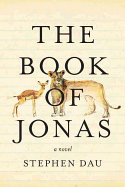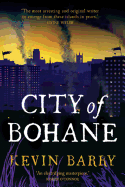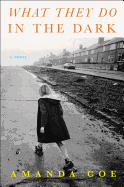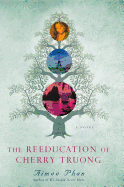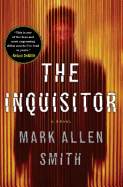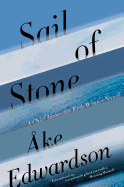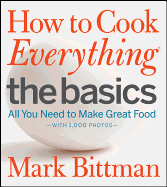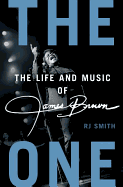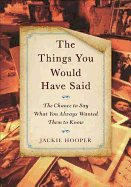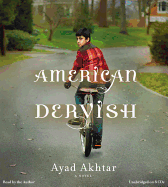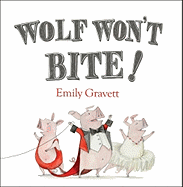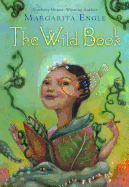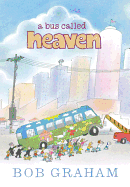David Foenkinos's books have been translated in 30 countries around the world. But it wasn't until his 2009 novel, La délicatesse--a story about a young widow who forms an unexpected relationship with an emotionally fumbling coworker--became a bestseller in his native France that American publishers finally took notice. Harper Perennial acquired that book, now retitled Delicacy, and while it can be hard sometimes to introduce a new author in translation, the publisher has a slight advantage this time--Delicacy is now also a film starring Audrey Tatou and François Damiens as Natalie and Markus, with a screenplay adapted by Foenkinos, who also co-directed with his brother Stéphane.
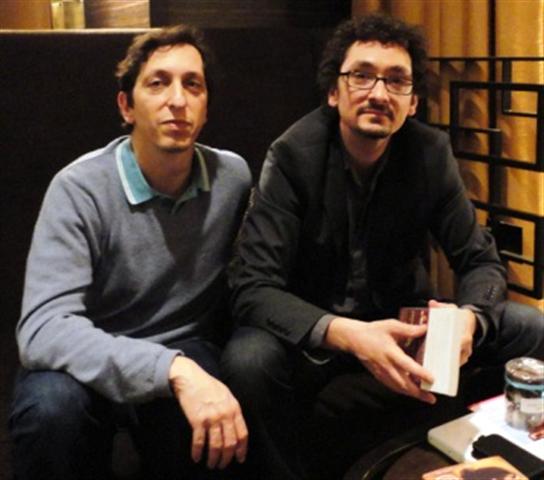 |
| Stéphane and David Foenkinos visit N.Y.C. |
"At the beginning, I didn't think it would be a movie," Foenkinos admits, sitting in an uptown Manhattan hotel lobby at the start of a double-duty publicity tour. (He has very little trouble with English, but Stéphane--who became extremely fluent over years of working with Hollywood filmmakers as a casting director for French-location shoots--is on hand to supply translation for the occasional word or phrase.) He'd written original screenplays before, but none of them had ever been filmed, and he wasn't especially interested in adapting his own novels. "This was the first time that I felt I had the movie story in me."
But what about a scene early in the novel, written like a screenplay with an authorial footnote: "Actresses imagined by the director: Audrey Tatou as Natalie and Mélanie Bernier as Chloe"? Just a joke, he insists, although he did eventually get both actresses for those parts. Because the novel's story is relatively simple, he explains, "I tried to have fun with the idea of novelization, the act of writing the novel." (Other small chapters have dictionary definitions, quotations from other authors, and random bits of background information about the characters.) "It was more of a playful thing, rather than thinking ahead."
"It was important to keep the spirit of the book," Foenkinos said of the adaptation process, and though there were some scenes that didn't survive the transition from novel to screenplay, he doesn't regret any of the omissions--although there are some bits he does miss just a little, like a scene in which Markus, hoping to confront Natalie at work, walks up and down the hallways outside her office all morning and afternoon, only to be told that she never came in that day. "It would have been funny," he said, "but it would have been hard to keep it in." On the other hand, he did get to keep another scene where an embarrassed Markus twists his neck to avoid looking Natalie in the eye when she tries to start a conversation. ("That makes up for a lot of scenes from the book that explain Markus's character that aren't in the final film," Stéphane observed.)
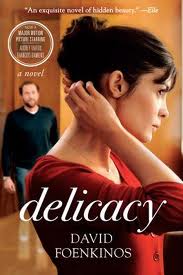 Overall, Foenkinos said, the transition from novelist to film director went well, but they do require different approaches to storytelling. "When you're a writer, you're alone in your room. You can write whatever you want," he explained. "But on the film set, you're dealing with 50 people every day. You have to be always focused, always sure of what you want next." In order to maintain that focus across the production, he and his brother decided they didn't want the actors to read the novel. "It's an emotional story, and they didn't need all the information that's in the book. It's too confusing. We preferred that what they knew about their characters was what was in the script or what we were telling them on the set." Eventually, he noted, Audrey Tatou did read the book, but not until after she'd seen the finished film.
Overall, Foenkinos said, the transition from novelist to film director went well, but they do require different approaches to storytelling. "When you're a writer, you're alone in your room. You can write whatever you want," he explained. "But on the film set, you're dealing with 50 people every day. You have to be always focused, always sure of what you want next." In order to maintain that focus across the production, he and his brother decided they didn't want the actors to read the novel. "It's an emotional story, and they didn't need all the information that's in the book. It's too confusing. We preferred that what they knew about their characters was what was in the script or what we were telling them on the set." Eventually, he noted, Audrey Tatou did read the book, but not until after she'd seen the finished film.
The popularity of the novel in France also meant that the film came with some expectations. "A lot of people thought Natalie was blonde, and it actually came up during test screenings," Foenkinos said; she's never explicitly described as blonde in the novel, but there is a line where he describes her as having "a kind of Swiss femininity," from which readers drew their own conclusions. Others recalled the descriptions of Markus as physically unpleasant ("which is not to say that he was ugly") and complained that François Damiens was too good-looking for the role!
In the end, though, Foenkinos said, "when you're in a movie theater, and a 100 people are watching your movie and loving it, it's a feeling you can't have as a writer. You're really sharing your story." Not that he's abandoning literature any time soon; in fact, he wrote another novel, Les souvenirs (Memories), in the space of time between Audrey Tatou accepting the part of Natalie and when she was available to begin shooting the film. Could that end up on the big screen, too? "Maybe I'll write the script," he said, smiling, "but I'm not going to make movies of all my books." --Ron Hogan, founder of Beatrice.com
David Foenkinos: The Delicate Art of Film Adaptation




 Overall, Foenkinos said, the transition from novelist to film director went well, but they do require different approaches to storytelling. "When you're a writer, you're alone in your room. You can write whatever you want," he explained. "But on the film set, you're dealing with 50 people every day. You have to be always focused, always sure of what you want next." In order to maintain that focus across the production, he and his brother decided they didn't want the actors to read the novel. "It's an emotional story, and they didn't need all the information that's in the book. It's too confusing. We preferred that what they knew about their characters was what was in the script or what we were telling them on the set." Eventually, he noted, Audrey Tatou did read the book, but not until after she'd seen the finished film.
Overall, Foenkinos said, the transition from novelist to film director went well, but they do require different approaches to storytelling. "When you're a writer, you're alone in your room. You can write whatever you want," he explained. "But on the film set, you're dealing with 50 people every day. You have to be always focused, always sure of what you want next." In order to maintain that focus across the production, he and his brother decided they didn't want the actors to read the novel. "It's an emotional story, and they didn't need all the information that's in the book. It's too confusing. We preferred that what they knew about their characters was what was in the script or what we were telling them on the set." Eventually, he noted, Audrey Tatou did read the book, but not until after she'd seen the finished film.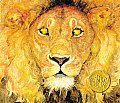 But if Williams and his team had examined the Caldecott award books up to the present, they'd have rejoiced in the choices for 2010--a unanimous endorsement of nature: Jerry Pinkney's wordless extravaganza set on the Serengeti, The Lion and the Mouse (Little, Brown), the 2010 Caldecott Medal winner; the two 2010 Caldecott Honorees All the World by Elizabeth Garton Scanlon, illustrated by Marla Frazee (Beach Lane/S&S), which celebrates the interconnectedness of life by the sea, its farms and its people, and Red Sings from Treetops: A Year in Colors by Joyce Sidman, illustrated by Pamela Zagarenski (Houghton Mifflin Harcourt), an homage to the seasons. Surely a 100% nature books year offsets their mean.
But if Williams and his team had examined the Caldecott award books up to the present, they'd have rejoiced in the choices for 2010--a unanimous endorsement of nature: Jerry Pinkney's wordless extravaganza set on the Serengeti, The Lion and the Mouse (Little, Brown), the 2010 Caldecott Medal winner; the two 2010 Caldecott Honorees All the World by Elizabeth Garton Scanlon, illustrated by Marla Frazee (Beach Lane/S&S), which celebrates the interconnectedness of life by the sea, its farms and its people, and Red Sings from Treetops: A Year in Colors by Joyce Sidman, illustrated by Pamela Zagarenski (Houghton Mifflin Harcourt), an homage to the seasons. Surely a 100% nature books year offsets their mean. Of the 2012 books, could there be a greater nature lover than the canine star of the Caldecott-winning A Ball for Daisy by Chris Raschka (Schwartz & Wade/Random House)? Okay, maybe that's a stretch. But what about Grandpa Green's intergenerational heroes in the Caldecott Honor book by Lane Smith (Roaring Brook/Macmillan), whose pride and joy are the topiaries they tend. And I think we could agree that Jane Goodall was fond of nature in Patrick McDonnell's Caldecott Honor book Me... Jane (Little, Brown). Even Blackout by John Rocco (Disney/Hyperion), notwithstanding the urban backdrop, finds its cast of characters up on the roof! Nature brings them all together. A sobering trend of growing isolation from the natural world in children's books? Hardly.
Of the 2012 books, could there be a greater nature lover than the canine star of the Caldecott-winning A Ball for Daisy by Chris Raschka (Schwartz & Wade/Random House)? Okay, maybe that's a stretch. But what about Grandpa Green's intergenerational heroes in the Caldecott Honor book by Lane Smith (Roaring Brook/Macmillan), whose pride and joy are the topiaries they tend. And I think we could agree that Jane Goodall was fond of nature in Patrick McDonnell's Caldecott Honor book Me... Jane (Little, Brown). Even Blackout by John Rocco (Disney/Hyperion), notwithstanding the urban backdrop, finds its cast of characters up on the roof! Nature brings them all together. A sobering trend of growing isolation from the natural world in children's books? Hardly.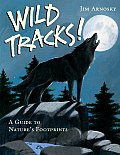 But why would they think Caldecott books would be the best source of titles about nature for children? The best illustrated books of the year often do include nature representations, but the best nature books have their own tall orders to fill: accuracy and information for young people who want to learn more about their own and others' environment and how best to appreciate it and care for it.
But why would they think Caldecott books would be the best source of titles about nature for children? The best illustrated books of the year often do include nature representations, but the best nature books have their own tall orders to fill: accuracy and information for young people who want to learn more about their own and others' environment and how best to appreciate it and care for it.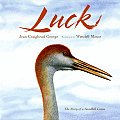 Jean Craighead George's books, illustrated by Wendell Minor (Everglades and Luck, both HarperCollins), delve deeply into a specific ecosystem and often pinpoint the elements that put it at risk (sometimes of a human nature). Nic Bishop has created some of the most outstanding photographs of the natural world available, such as his recent Butterflies and Moths (Scholastic) for beginning readers and his work for the 2011 Sibert Medal–winning book by Sy Montgomery, Kakapo Rescue (Houghton Mifflin).
Jean Craighead George's books, illustrated by Wendell Minor (Everglades and Luck, both HarperCollins), delve deeply into a specific ecosystem and often pinpoint the elements that put it at risk (sometimes of a human nature). Nic Bishop has created some of the most outstanding photographs of the natural world available, such as his recent Butterflies and Moths (Scholastic) for beginning readers and his work for the 2011 Sibert Medal–winning book by Sy Montgomery, Kakapo Rescue (Houghton Mifflin).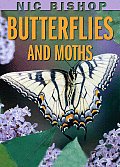 These researchers would have gotten a better picture by examining ALA's
These researchers would have gotten a better picture by examining ALA's 
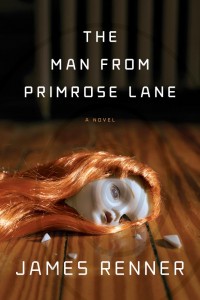 Book you've faked reading:
Book you've faked reading: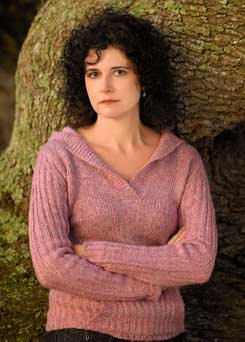 The book I'm reading features a character with hair so greasy that it stains the shoulders of his jacket. He lives in filth. He murders at will. He is willing to let a whole shipload of people expire from thirst. He is unremittingly repulsive, yet I just can't look away. Why?
The book I'm reading features a character with hair so greasy that it stains the shoulders of his jacket. He lives in filth. He murders at will. He is willing to let a whole shipload of people expire from thirst. He is unremittingly repulsive, yet I just can't look away. Why?